I traveled to the North-African country of Morocco and joined a Road Scholar tour group to see the country and learn about Moroccan history and culture. I flew into the capital city of Rabat on February 29th.
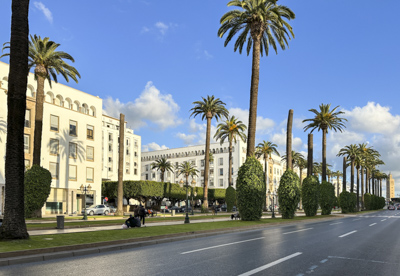
Rabat is the governmental center of Morocco and the primary residence of King Mohammed VI. The city was very clean, quite modern, and walkable. The Onomo Hotel is located in the center of Rabat.
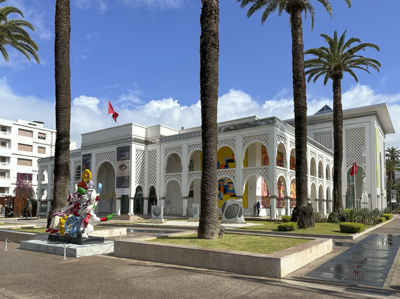
The Modern Art Museum had an interesting exhibit featuring the contemporary poet and artist, Abdellatif Laabi. I also visited the Museum of History and Civilizations and the beautiful Villa des Arts.
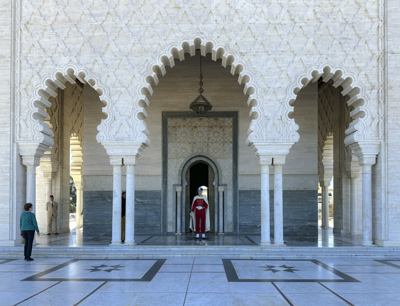
The 12th century Hassan Tower complex was also the location of the tombs of King Hassan II and King Mohammed V, the present king’s father and grandfather. The mausoleum is decorated with beautiful colorful geometric mosaic tiles.

The tour was created by the Center for Cross Cultural Learning which is located in the Medina or “old city” of Rabat. The Road Scholar group heard several excellent lectures on Moroccan culture and we enjoyed several delicious traditional meals prepared at the center.
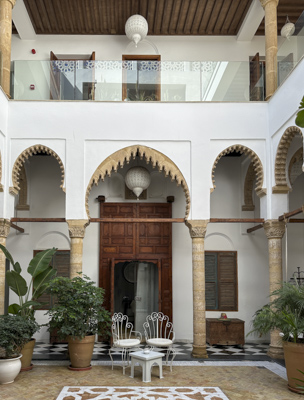
The Cultural Center was housed in a “riad” which is a classic town house set around an interior courtyard. We also enjoyed lunch at Dar Shaan Riad which has been converted to a lovely small hotel.

A “kasbah” is a fort or citadel. Rabat’s kasbah was built by Muslim refugees from Spain in the 15th century. Inside the walls are residential buildings which had been recently repainted in white. Also, the narrow alleyways were neatly repaved giving the district a clean almost modern appearance.
The group left Rabat on March 6 and we drove north by bus to Tangier. We stopped for lunch in the lovely town of Asilah.

Since 1978, Asilah has hosted the annual International Cultural Moussem of Asilah. Every year artists are invited to decorate the whitewashed walls of the city. The murals stay up until the following year for everyone to enjoy.


Asilah is located on the Atlantic Ocean so we enjoyed a delicious seafood lunch.
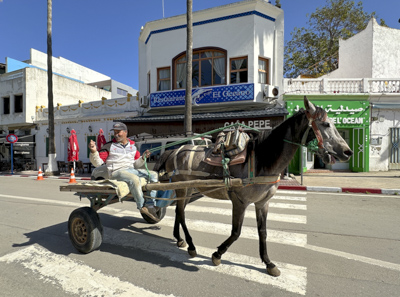
Many signs in Asilah were in Spanish reflecting its Iberian history.
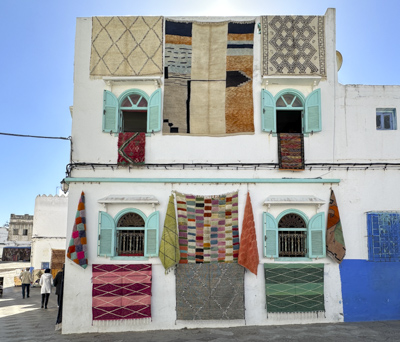
We continued to Tangier, which is an international city located on the Strait of Gibraltar at the entrance to the Mediterranean Sea.

Cape Spartel is the northwest corner of the African Continent. We spent an interesting evening in Tangier and stayed at a lovely modern hotel overlooking the beach, the Barcelo Tanger.
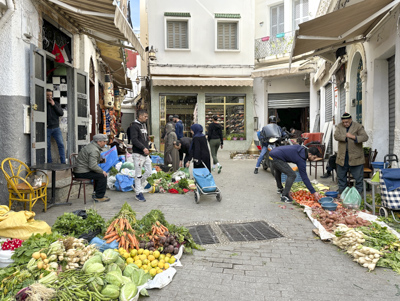
The group visited the newer neighborhoods of Tangier and then we explored the Medina within the walls of the Kasbah.
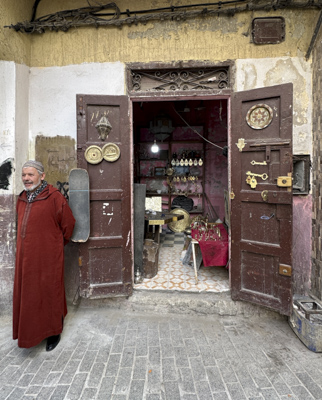
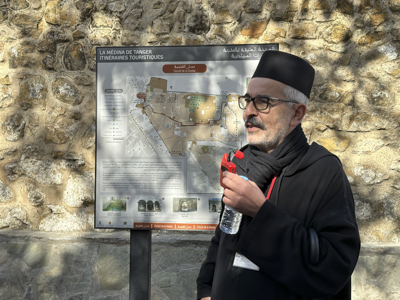
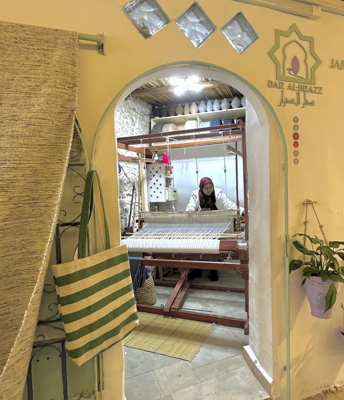

We continued traveling, but it was raining when we arrived in the “Blue City,” known as Chefchaouen. The city, located in northern Morocco, was built in the Rif Mountains.
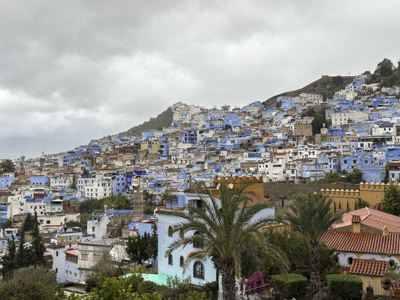
Muslims and Jews from Spain settled in Chefchaouen during the “Reconquista” from 1492 to 1610. The Road Scholar group stayed at a lovely hotel built on the side of a steep hill.

It was fun walking around, exploring the Medina, and taking photos of the “Blue City” in spite of the rain.
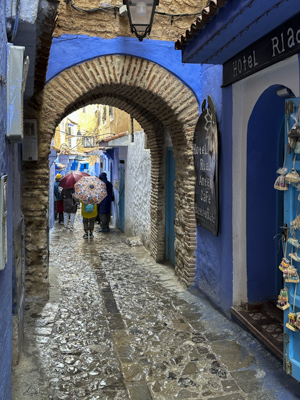
Chefchaouen must be a photographer’s paradise on sunny days….

The rain subsided by the time we reached the Uta Hammam Square. The original citadel was founded in the late 15th century and today it is a museum exhibiting archeological objects.
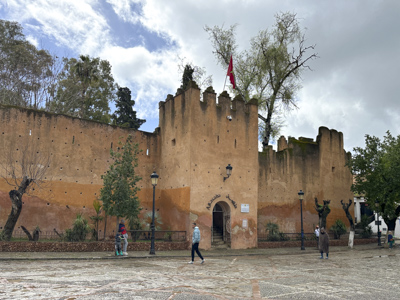
On our way to the city of Fes, the motor coach stopped at a gas station/rest stop. We watched a woman prepare two large tagines for people who would later stop for lunch. She was very pleased to show us her work.

Later, we stopped at the city of Ouazzane for lunch at the home of the directors of the Cultural Center. It was still raining when arrived. We all noticed that the walls of the Medina were painted bright green.
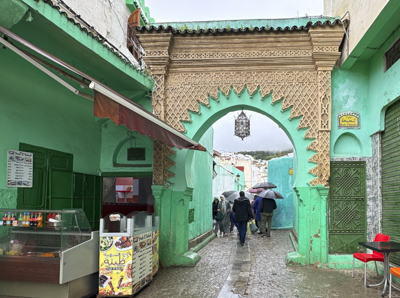
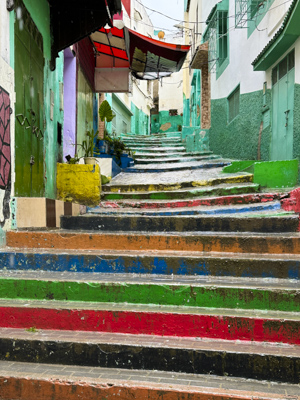
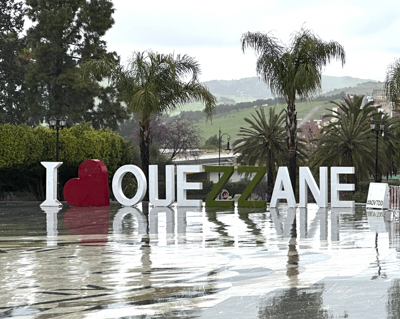

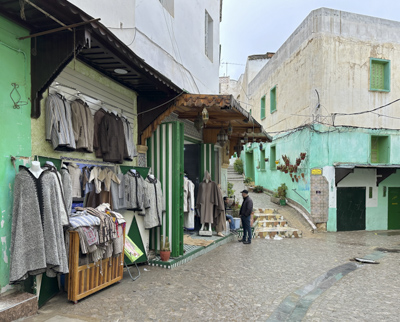
Fes vies with Marrakesh as one of Morocco’s most visited cities. Fes was founded in 808 AD and was once the ancient capital of Morocco. The city is considered the most spiritual of all the imperial cities.
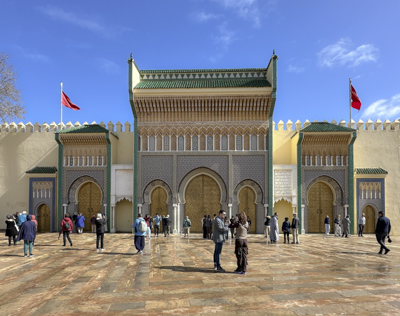

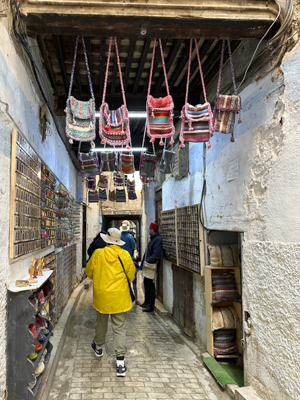

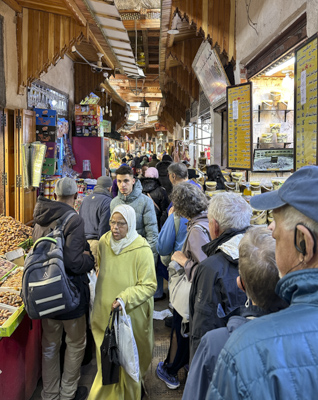
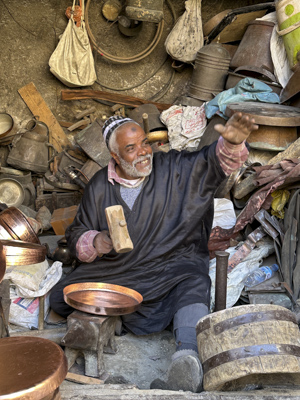
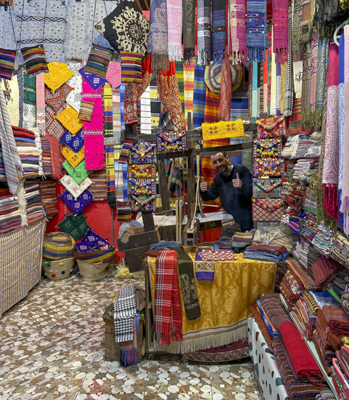

We stayed in Fes for three nights. One day we went on a field trip to the Roman ruins of Volubilis. The ancient city had been an active metropolis from approximately 24AD to 285AD.




The group also went to Meknes, which was another Imperial city which became the ruling capital in the 17th century. We visited the Dar Jamai Museum which is a museum of musical instruments housed in a beautiful 19th century palace.

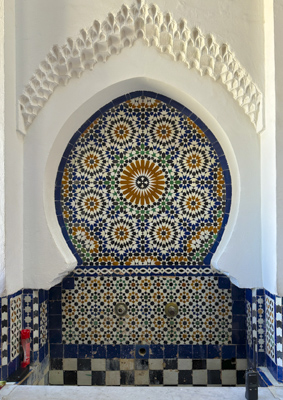



It was a long drive to the Moroccan city of Erfoud. The scenery became more barren as the motor coach drove east. Green fertile farmland gradually gave way to brown sand.




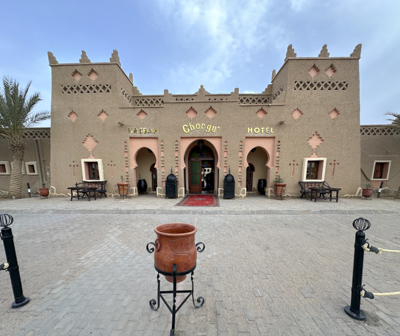

The next day, we drove to a small village in southeastern Morocco called Merzouga, located about 30 miles from Erfoud. We saw the ruins of the medieval city of Sijilmassa. By late afternoon we went to the northern edge of the Sahara Desert to meet our camels.

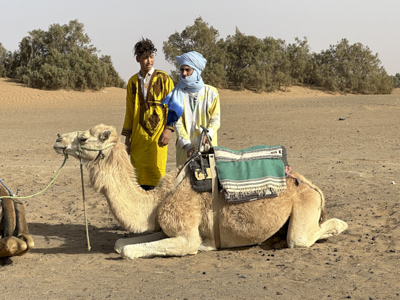


We rode our camels out of town and into the desert. So much fun!!! We were met by 4X4 vehicles and were driven over the huge sand dunes to our desert camp.



We were assigned to our individual tents which had private bathrooms and showers. We had dinner in the main tent and afterwards enjoyed live music outside under the stars. It was lovely.

We spent one night in the desert camp. In the morning we watched the sun rise over Algeria. After breakfast, we continued westward across the High Atlas Mountains toward the city of Marrakech.



Known as the “Red City” with a population of over one million people, Marrakech lies at the western foothills of the Atlas Mountains. The city is the most visited city in Morocco. There were many foreign tourists everywhere. We walked to a modern mall from our hotel, the Kenzi Rose Garden.


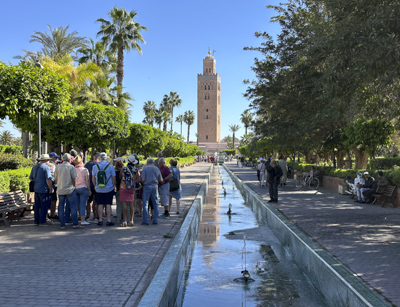




One day we drove to the village of Aghmat to meet several Moroccan women who had developed a cooperative. We were invited to have lunch with them and watch a demonstration of making couscous.

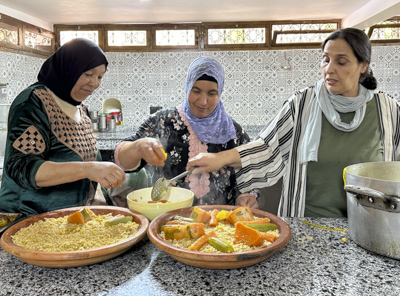
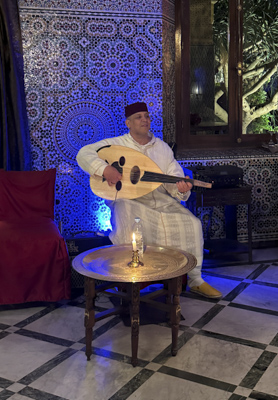
We had a lovely “Farewell Dinner” at The Red House – Palais d’Hotes Restaurant in Marrakech – with live traditional music. The next day, the group rode the motor coach to Casablanca. This was the last day of the tour. Casablanca is a large metropolis with almost four million people.

We toured the Hassan II Mosque, which is the only mosque in Morocco open to non-Muslims. It was completed in 1993 by the former king of Morocco. It is the 14th largest mosque in the world with a capacity of 105,000 worshippers inside and outside.


Most of the Road Scholar participants left Morocco on March 19th. I wanted to see more of Casablanca so I extended my stay two more days. I stayed at the Hyatt Regency Hotel in the center of the city.

Casablanca is a romantic and exciting city to many Americans because of the 1942 movie with Humphrey Bogart and Ingrid Bergman. However, it is really not a tourist city and there are very few attractions for tourists. Casablanca is crowded and noisy with a lot of chaotic traffic.
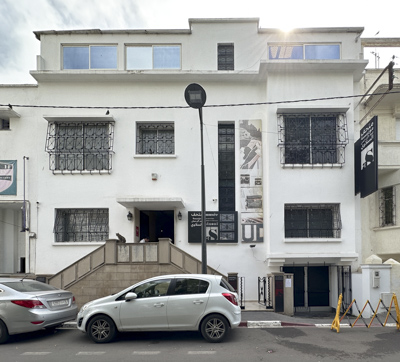
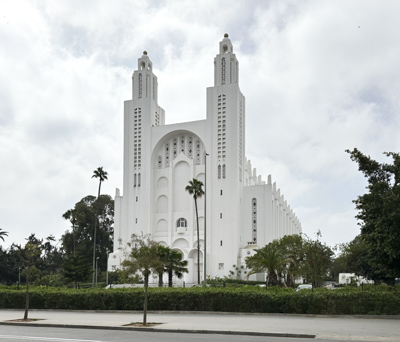
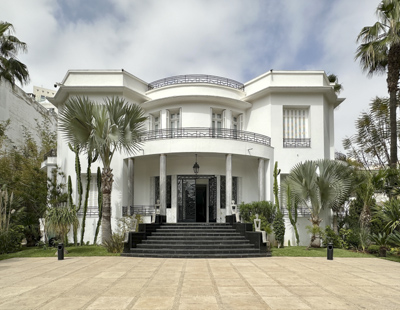


An American, Kathy Kriger, created Rick’s Cafe Restaurant near the old Medina in Casablanca for tourists and film buffs. The facts are: the movie was completely filmed in Hollywood and the story had nothing to do with the city of Casablanca, except the name. But I had to go!! It was a fun experience!
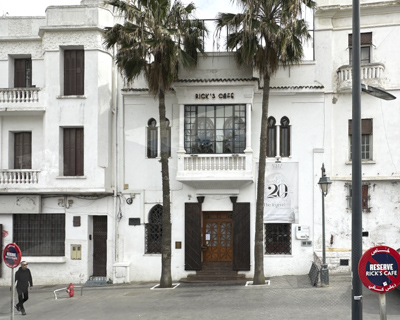


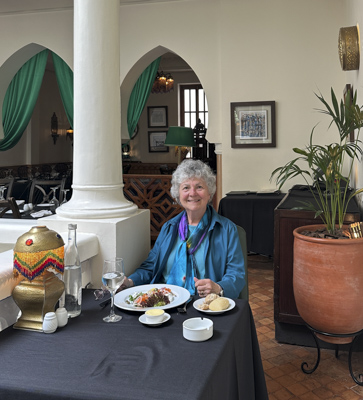


I took a red “Petit Taxi” to a market called the Souq Habous. It was a small shopping district which was built in the 1930s. I found a wonderful bakery called Patisserie Bennis and bought delicious cookies.
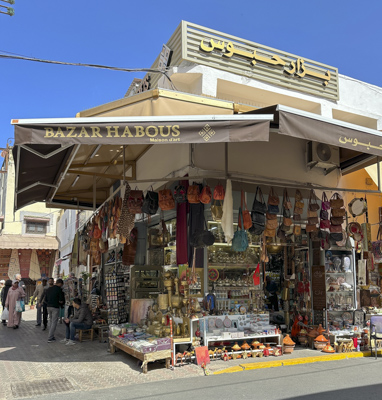
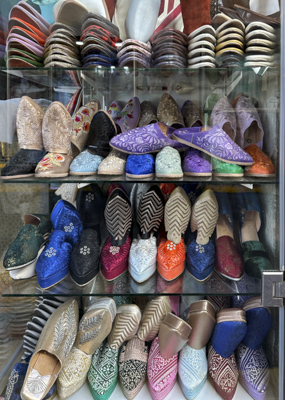



My Air France flight left very early in the morning. I had a wonderful and amazing time in Morocco. It is a dynamic country with great potential. Morocco is in the process of integrating its rich cultural heritage with the modern 21st century world and a true “Melting Pot of Cultures.”